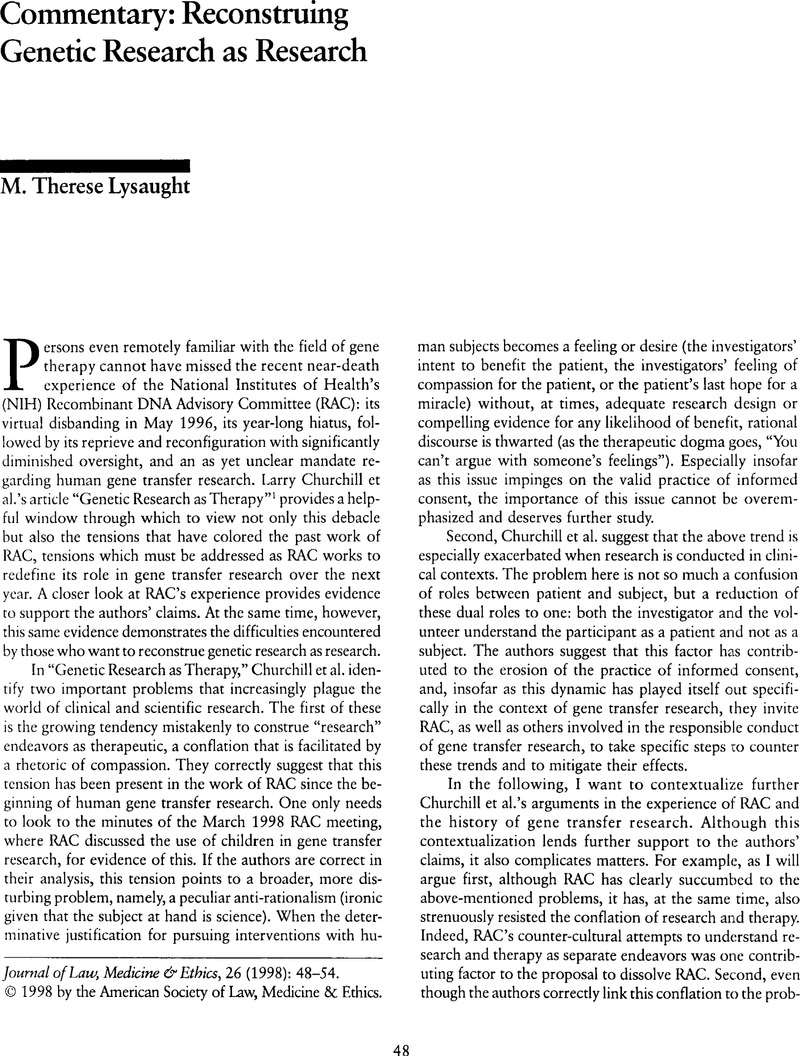Crossref Citations
This article has been cited by the following publications. This list is generated based on data provided by Crossref.
King, Nancy M.P.
1999.
Rewriting the "Points to Consider": The Ethical Impact of Guidance Document Language.
Human Gene Therapy,
Vol. 10,
Issue. 1,
p.
133.
Kapp, Marshall B.
2000.
Encyclopedia of Ethical, Legal and Policy Issues in Biotechnology.
SANKAR, PAMELA
2004.
Communication and Miscommunication in Informed Consent to Research.
Medical Anthropology Quarterly,
Vol. 18,
Issue. 4,
p.
429.
Stockdale, Alan
2006.
Encyclopedia of Life Sciences.
Kimmelman, Jonathan
2009.
Gene Therapy of Cancer.
Vol. 542,
Issue. ,
p.
423.
Kimmelman, Jonathan
2015.
Gene Therapy of Solid Cancers.
Vol. 1317,
Issue. ,
p.
263.



